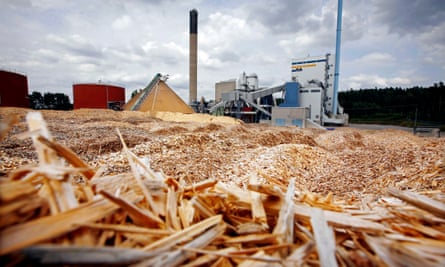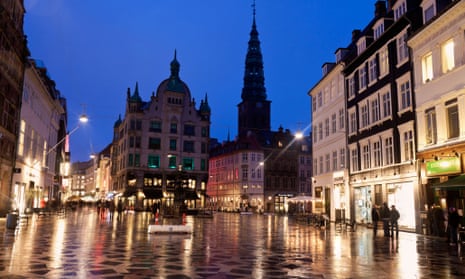When heads of state go to Paris at the end of the year to negotiate a deal to tackle climate change, global city mayors will also be there, arguing that since cities are responsible for 70% of CO2 emissions, the battle should be waged, street by street, at a city level.
More than 6,000 European cities have signed up to the Covenant of Mayors, a voluntary commitment to go faster and further than EU climate targets. Their climate action plans call for, on average, a 28% cut in CO2 emissions by 2020, 8% more than the EU’s 2020 target.
Even Kiev, which came last of 30 cities in Siemen’s 2009 European Green City Index, is a signatory. Vitali Klitschko, elected mayor last May, said he wanted to end the Ukrainian capital’s dependency on oil and gas – though Kiev’s membership has been suspended until it files a sustainable energy action plan.
Last year the Economist listed the Covenant of Mayors as one of most effective global initiatives to help mitigate climate change. Alix Bolle of the European association Energy Cities says many Scandinavian and German cities do well on energy not only because they have highly efficient district heating and cooling systems, but because powers to harness and manage energy are decentralised. “They are capable of making decisions at the right scale and the right speed, and can be quicker than national governments in taking the next steps in the energy transition,” she says.
Here we look at how three leading European cities are taking action to cut CO2 emissions into their own hands:

Copenhagen, Denmark
The Danish capital and widely acknowledged clean energy leader in Europe has per capita CO2 emissions of 2.8 tonnes a year, compared with the EU average of 7.3 tonnes. The city of 570,000 people is on target to fulfil its ambition to be the world’s first CO2-neutral capital in 2025 – 25 years earlier than the Danish government’s target.
Heat accounts for half of Europe’s primary energy demand, and Morten Kabell, Copenhagen’s technical and environmental mayor, puts the city’s success at cutting CO2 emissions down to its extensive district heating and cooling system, with 98% of residents connected. The combined heat and power (CHP) plants and waste incineration are highly energy efficient, and 53% of the fuel comes from biomass.
Copenhagen already gets 4% of its electricity needs from a large wind park in its harbour, a cooperative half-owned by the city and half by 9,000 small investors. But Kabell says the city wants half of its electricity to come from wind power by 2020, and has set aside £700m to build 100 onshore and offshore wind turbines.
Mark Watts, executive director of C40 cities climate leadership group, says Copenhagen’s approach to urban wind energy is being watched closely by other major cities. “Copenhagen has been very clever in the way it’s made a significant investment in wind over the last decade,” he says. “Like everywhere else in the world there’s been opposition to it from an aesthetic point of view, but they’ve overcome it by giving local people in the sightlines [of the turbines] shares in the company.”
But cities cannot act on their own; they need supportive national policies. Kabell says the city would like to bring more solar and geothermal energy onto the grid, but it has been stymied by the Danish government.
“Denmark is moving ahead with wind energy. But there have been no incentives for geothermal, which we could use in the district heating system instead of fossil fuels, and there has been no investment in solar since the government cut [feed-in] tariffs.” he says. “It would make my work easier if my government did more action on climate change targets instead of talking.”

Växjö, Sweden
Växjö (pronounced Veck shuh), population 77,000, was the first city in the world to declare, in 1996, that it would be fossil-fuel free by 2030. This small city, surrounded by forests and lakes in southern Sweden, pips Copenhagen with per capita emissions of 2.4m tonnes, having cut CO2 emission by 36.8% since 1993.
Like Copenhagen, Växjö has a comprehensive district heating network that is mandatory for new dwellings. And since the CHP plant is almost exclusively fuelled by waste wood from the surrounding forest, 93% of the municipality’s heat is from renewable sources. About a quarter of its electricity is locally produced renewables – biomass, small hydro, wind, biogas and solar – and together with imports from Sweden’s electricity grid, about 65% of Vaxjo’s power is renewable.
Asa Karlsson Bjorkmarker, Vaxjo’s deputy mayor, puts the city’s success down to proximity to forests for biomass, a longstanding political consensus on the council about its decarbonisation goals, and the fact that in Sweden income tax revenues go directly to councils, which have a huge amount of power to direct how money is spent.
But Bjorkmarker said the biggest challenge now facing Vaxjo is new legislation by the Swedish government that municipalities cannot set stricter rules on the energy consumption of new buildings than national regulations.
Bristol, UK

Pioneering plans to establish a municipally owned energy company, based on the Scandinavian model, helped Bristol earn the crown of European green capital this year.
According to its award application, the city is the most energy efficient of the eight major English cities outside London, uses 20% less energy per person than the average, and has reduced energy use in council buildings by 28% in the past 10 years.
Renewable energy accounts for 15% of electricity, and Bristol has the first two municipally owned wind turbines, as well as biomass wood boilers and a £1.1m solar PV for schools programme.
Bill Edrich, director of the council’s energy service, says a municipally owned energy company will allow it to install district heating networks, fuelled by sources such as biomass, gas, and energy from waste, as well as invest in energy efficiency improvements in people’s homes. More immediately, Edrich sees the potential to generate up to 1GW of solar PV by 2020, signing power purchase agreements with community organisations, which will be encouraged to install solar PV on council properties rent free.
Will Straw, co-author of an IPPR report, City Energy: a new powerhouse for Britain, says Plymouth, Nottingham and Chester are also looking to set up their own energy services companies, spurred on by the government’s devolution agenda. The Scandinavian cities have shown that it makes sense from a climate perspective, says Straw. “There are a lot of clean technologies – like solar, district heating, and combined heat and power – that are very much suited to being organised at a local rather than national level.”
Talk to us on Twitter via @Guardianpublic and sign up for your free weekly Guardian Public Leaders newsletter with news and analysis sent direct to you every Thursday.

Comments (…)
Sign in or create your Guardian account to join the discussion